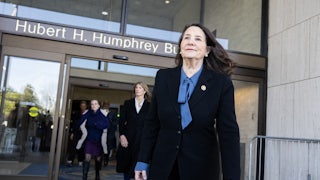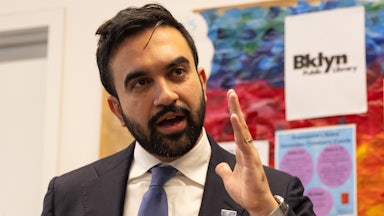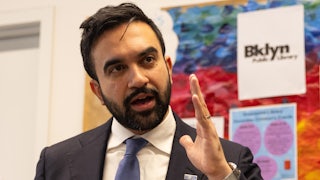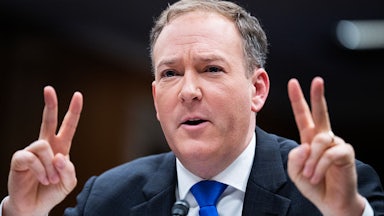If you’re reading this, chances are good that you read other stories about climate change too. Looking around at the news yesterday, you may well have stumbled onto any number of Earth Day–inspired cases for optimism: “tiny climate actions” like adjusting the thermostat and propagating your plants, profiles of environmental do-gooders, steps to becoming the “best planetary citizen possible.” Those kinds of cheery spreads are standard fare for Earth Day. But they feel more than a little discordant with the drumbeat of decidedly awful climate news coming from both the planet itself and a White House attempting to dismantle clean air regulations, defund scientific research, claw back climate funds approved by Congress, and potentially even strip environmental groups of their nonprofit status.
Many people, though, are hearing less about all of the above. Media Matters recently found that corporate broadcast news coverage of climate change fell by 25 percent last year compared to 2023. While climate coverage at national outlets like The New York Times and The Washington Post has surged by as much as 300 percent since 2012, according to one recent academic study, smaller outlets around the country haven’t kept pace; smaller, predominantly state and local outlets expanded their climate coverage by about half as much over the same time period.
The growing numbers of people who tend to get their news from other sources, meanwhile—including social media platforms—are hearing a lot of nonsense. An analysis published this week by Yale Climate Connections found that eight of the 10 most popular online shows—including those hosted by Joe Rogan and Jordan Peterson—have “spread false or misleading information about climate change.” A report from the British news site Tortoise Media—analyzing the climate-related output of more than 300 influencers—likewise shows that climate-skeptic posts on YouTube grew by 43 percent between 2021 and 2024. On X (formerly Twitter), such content ballooned by 82 percent over the same time period. As much as 40 percent of it posits that climate change is merely an excuse for some shadowy network of conspirators to control the population and/or bring about “communism.”
Given that one in five people in the United States regularly get their news from social media, that means a lot of people are getting bad information about the climate crisis. That’s especially true of young people. A Pew poll released late last year found that 37 percent of 18- to 29-year-olds here regularly get news from “news influencers,” who tend to lean right if they have any obvious political affiliations. Survey results released in early 2024 by the Center for Countering Digital Hate found that nearly a third of U.S. teens aged 13 to 17 view climate change as “harmless,” including 39 percent of teen boys. The same poll found 33 percent of teenagers—and 40 percent of teen boys—said climate change policies “do more harm than good.”
Academics and philanthropists have spent more than a decade theorizing about the best ways to convey information about climate change to the general public: the merits of projecting hope instead of “doomerism” and of showcasing actually existing climate solutions. Nobody seems to have cracked the code, though. Growing awareness of the climate crisis—and consistently positive polling about how many people want their governments to do more about it—still hasn’t translated into many governments actually taking said action, at least not at anywhere near the scale the crisis requires. Big national outlets have invested in telling more good-news stories to readers who already care about climate change, while right-wing YouTubers broadcast lies and conspiracy theories to huge audiences. If you’ve made it this far, you can count yourself among the relatively small number of people who regularly read climate coverage beyond the headlines. Thank you! Accordingly, you probably don’t need me to sugarcoat the conclusion with a half-baked case for optimism: This isn’t good.








